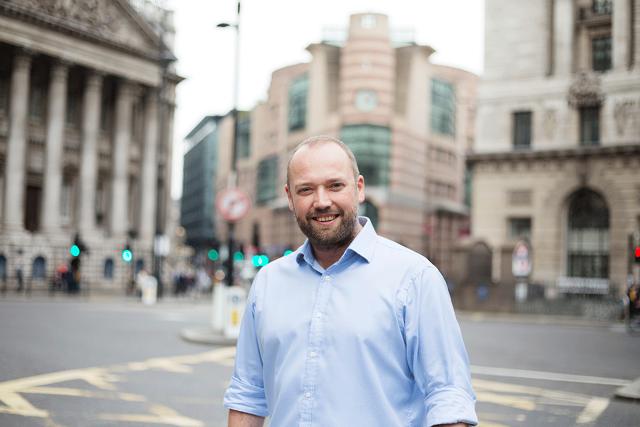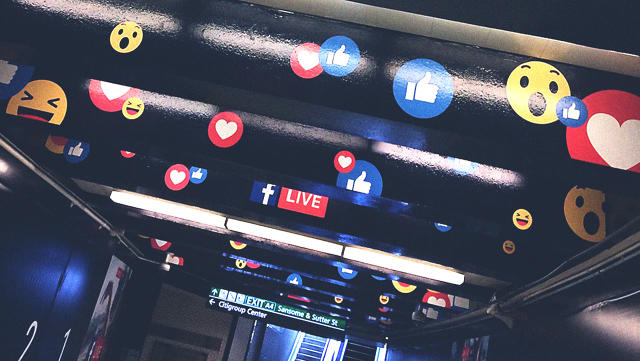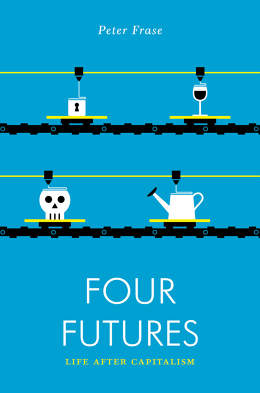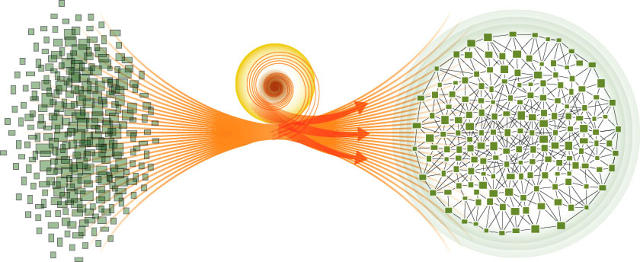McKinsey Social Initiative's Generation aims to get millennials into better jobs in fields that need more qualified workers.
Twenty-seven-year-old Jessica Miller could have easily become a casualty of the millennial job market. A single mother of three (ages 6, 7, and 8), she had taken a few courses at California University of Pennsylvania after graduating from high school in 2007, but as her student loans mounted, Miller stepped away from academia to work full-time.
From there, she held a series of low-wage jobs. In addition to working at fast-casual restaurant Qdoba, Miller says, "I was working as a cashier at a grocery store, then I worked at a day care for a few years."
She's not alone. As the largest generation in the U.S. workforce, millennial unemployment is at 11.5%, according to the latest data from the Bureau of Labor Statistics. That's nearly triple the total U.S. unemployment rate, which stood at 4.7% in December.
Worse still, even many millennials with jobs are just scraping by. According to a recent Accenture study, 51% of 2014-2015 graduates are underemployed—holding jobs that don't require the college degrees they've earned—and that number has risen precipitously over the past 15 years. The Economic Policy Institute (EPI) found similar troubles among millennials whose academic careers terminated with high school diplomas; underemployment among that group stood at 33.7% last year, compared with 26.8% in 2007.
Making matters worse, according to EPI researchers, is the fact that the U.S. workforce used to be much richer in skilled positions (like dental hygienist or electrician) that offered health benefits and some sort of retirement plan to workers without college degrees or even high school diplomas. But these days, many are like Miller—working as food servers, cashiers, and in other low-wage jobs without benefits or overtime.
Miller originally had her sights set on a job in health care, because of the opportunities it presented for a sustainable career. So, anxious to find an alternative to her patchwork of service positions, she went to her local Goodwill Job Connection to see if there was anything available. That's where she heard about the Generation program.
Getting Young People Into "Good" Jobs
The program was developed by the McKinsey Social Initiative in 2015 to find and train unemployed or underemployed workers ages 18–29 and place them into better jobs in health care, retail/sales/hospitality management, information technology (IT), and skilled trades like construction or mechanics. The goal is to tackle the twin problems of unemployment and underemployment by putting millennials into the industries with the highest demand for workers.

The consulting firm McKinsey & Company, Generation's parent company, launched the nonprofit with an initial fund of $70 million and additional grants from USAID ($15 million) and Walmart ($3.2 million). The organization builds on McKinsey's other work in the nonprofit world, where there are only a few other private-sector efforts to solve these issues. McKinsey's competitor Bain and Company also has a nonprofit arm called the Bridgespan Group that works with organizations and philanthropists on other social-impact efforts. The field isn't especially crowded, though, so any dent Generation could make would represent a significant step forward.
Mona Mourshed, Generation's global executive director and vice president of the McKinsey Social Initiative's board of directors, says her team evaluated over 150 education-to-employment programs in 25 countries to create the model for its own program. They wanted it to scale rapidly and it has: What started out as a "graduating class" of 1,200 students at the end of 2015 swelled to over 9,300 students across five countries and 14 professions by the end of 2016.
In the U.S., Generation has served 1,100 students in 10 cities, 61% of whom are female and 85% are African-American or Hispanic/Latino, according to Mourshed. This already makes it one of the largest programs of its kind. However, she points out, "given the size of the problem, the solution needs to be able to serve hundreds of thousands, and eventually millions, of young people a year."
Interviews, Homework, And More Interviews
To qualify for Generation's assistance, U.S. participants must hold a high school diploma or GED or, like Miller, have some college courses under their belts. "Applicants are then selected based on a mix of intrinsics, effort, and employment standards for the profession," Mourshed explains.
"There were a lot of interviews," Miller says with a laugh, recalling the exercises, including role plays, that Generation uses to test applicants' interpersonal skills relevant to a specific job function. "The final step," says Mourshed, "is to independently complete their pre-work activities"—the remaining paperwork and other small tasks that are part of the application process—"and arrive on time at our training center."
During the eight weeks it took to train with Generation, Miller didn't work at the day care center, but she did some babysitting on the side to help support her family. She says that her Generation cohort of 10 students received a $200 stipend per week to cover basic living expenses while they were in training. (That's since been adjusted to $150 per week, although the program's training stipends vary quite a bit globally.)
Miller also recalls doing homework alongside her three elementary schoolers. The state-mandated coursework for certified nursing assistants (CNAs) focuses on patient care, so Miller and her classmates learned about infection control, safety procedures, and communication skills. Generation's instructors also taught such clinical skills as how to take vital signs, bathe, and move patients. By the time she'd completed the program, Miller remembers one of her children telling her, "Congratulations, mommy, you worked very hard."
In less than a month, Miller landed a job as a CNA at the University of Pittsburgh Medical Center and has since been promoted to patient care technician.
Although her shifts are 12.5 hours long and she sometimes works nights, as the sole breadwinner, Miller says she's grateful to be making twice the minimum wage and to get paid time off. Generation reports that on average, its U.S. graduates make four times more than they did before the training. Nearly one-third (27%) are parents like Miller, and of those, 99% were previously living in poverty.
One of Generation's main challenges (and priorities) is keeping its training programs accessible, and it helped Miller cover the costs. "It was a tremendous help to not have to get another loan," she emphasizes. Despite being in college for just one semester, Miller struggled to gradually pay off a $2,000 loan, which ballooned over time to $7,000 with interest. The CNA program Miller completed is one of Generation's priciest, at an average of $5,500 per student, because the government caps class sizes for CNA trainees at 10 students and mandates eight weeks of instruction. (Other programs Generation offers, like hospitality and retail, are shorter, accept larger class sizes, and subsequently cost less than $2,500, Mourshed explains.)
With an 84% employment rate overall, Generation's reports show that 90% of its CNA grads earn their certifications, 80% outperform their peers in the field, and 80% are still working six months out. The data shows that they are two to three times cheaper to train and recruit than other CNA graduates, which represents a win for Generation's employer partners.
Looking ahead, Miller says she'd like to be an in-home aide so she can work with fewer patients and have more one-on-one time with each. Eventually, she'd like to become a registered nurse.
Making The Most Impact
But for the time being, Miller keeps circling back to gratitude. "Last year I paid off my loans in full," she says with no small amount of pride. No wonder, since last year's college graduates entered the workforce with an average of $35,051 in student loan debt—the highest in history, according to Edvisors, a website that provides information to parents and students about college costs and financial aid.
Such massive amounts of debt can force young people to make career choices they otherwise wouldn't consider, as Miller knows well. The Department of Labor's Employment and Training Administration (ETA) supports a wide variety of job training programs, including the Job Corps, founded in 1964 as part of President Lyndon B. Johnson's "War on Poverty." But the employment data makes clear that government efforts haven't solved the tangle of problems that young people like Miller now face. The nation's largest comprehensive residential education and job training program (for at-risk youth ages 16–24) is still narrower in focus than Generation's, whose nonprofit/public/private approach may prove better suited to making a sustainable difference.
If that's Mourshed's hope, she's still candid about the challenges ahead. Generation's difficulty collecting return-on-investment data is just one example. That demanded working closely with employers and with research partner Gallup. "With time, we have developed a better understanding of how to collect this data—measures like productivity and quality—accurately, and with a minimal burden to the employer," she says.
Quality assurance, says Mourshed, is also "a significant challenge that comes with scale." To ensure students have experience in every classroom no matter where in the world they sit, Generation has added an onboarding curriculum and continuous coaching resources for its instructors. It's also added classroom recording features across its entire network of sites.
"Our goal is to connect [young people] with skills and jobs that have a career pathway," Mourshed emphasizes, "so that they can fundamentally change their life trajectory." Generation is quickly discovering that's no small task, but just like its program graduates, it's putting in the work.


























